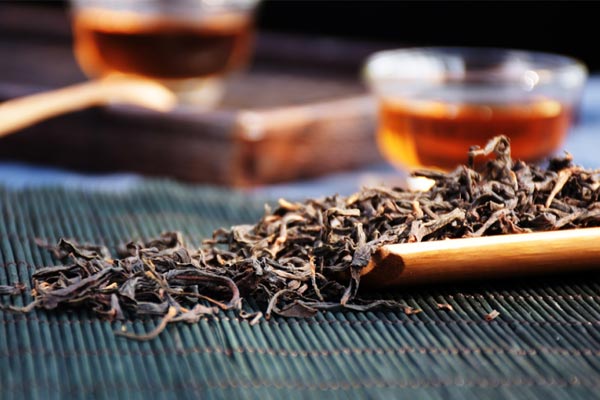◆ Core Definition
1. Tea Properties:
Warm in nature, it is a fully fermented tea. Suitable for those with Yang deficiency, but cautious for those with Yin deficiency or damp-heat constitutions.
2. Classification: It is divided into three main categories:
- Souchong Souchong (the originator of the world's black teas),
- Gongfu Black Tea (such as Keemun Black Tea and Dianhong Black Tea), and
- Broken Black Tea (classified by cut shape as leaf tea, broken tea, flake tea, and powdered tea).
3. History:
The world's earliest black tea originated in Tongmuguan, Chong'an, Wuyi Mountain, Fujian, China. It was called "Lapsang Souchong," and the earliest record dates back to the Longqing period of the late Ming Dynasty.
Lapsang Souchong was served at the wedding of the Portuguese princess and King Charles II of England in 1662, marking the origin of afternoon tea in Britain. Jin Jun Mei is a premium black tea developed in the 21st century, based on Lapsang Souchong. Black tea only became popular after the invention of the tea cutting machine in 1876, and my country began trial production in the 1960s.
4. Processing:
Withering - Rolling - Fermentation - Drying.
(The traditional Lapsang Souchong production process includes a "red pot" process before drying to prevent over-fermentation and remove some low-boiling point aromatic compounds.)
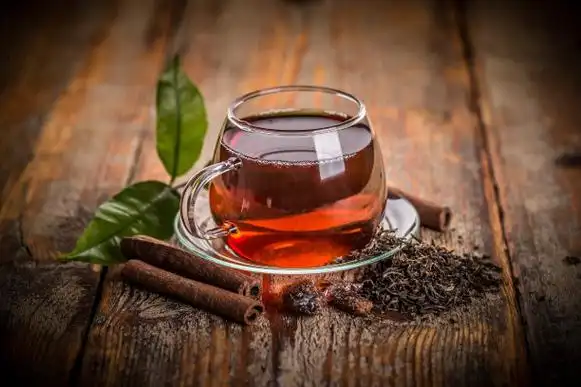
◆ Quality Characteristics
Red tea and red leaves, fragrant and sweet
Characteristics of a good black tea:
- Cloudiness after cooling: Caffeine forms complexes with polyphenols (such as thearubigins), which appear as a milky curd at low temperatures.
- Golden ring: High content of theaflavins
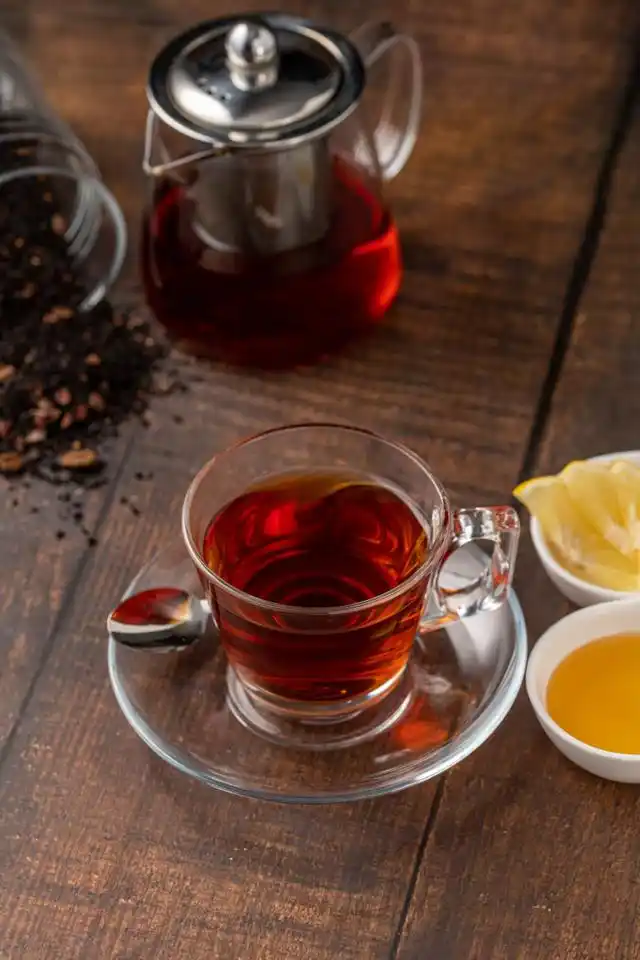
◆ Expert Tips
- Black tea fermented with inadequate fermentation technology can have a sour taste. Moisture can also lead to a sour taste. 2. The brewing water temperature is generally between 90-95°C.
- The shelf life of black tea is generally three years. The tea soup color becomes increasingly red and rich over time. The aroma weakens significantly in the second year, but the mellowness of the flavor improves.
- Traditionally, black tea is considered fully fermented (catechins are completely oxidized and polymerized). However, due to market demand, producers have shortened the fermentation time to retain a certain amount of catechins. As a result, many new teas on the market have a yellow tea soup, and only teas that are more fermented have a distinct red tea soup.
- The unique pine resin aroma of Souchong black tea is due to its smoked drying process: the tea leaves, after being repeatedly rolled, are placed on a drying rack and pine wood is burned in an outdoor stove, allowing the tea leaves to continuously absorb the pine smoke aroma during the drying process. (In recent years, due to the ban on pinewood being brought into Tongmuguan, authentic traditionally crafted pine-smoke-scented Lapsang Souchong teas are now rare on the market.)
- In recent years, some markets have incorporated the oolong tea greening process into black tea processing, resulting in rich and pronounced floral and fruity aromas and a purer flavor, suitable for drinking that same year.
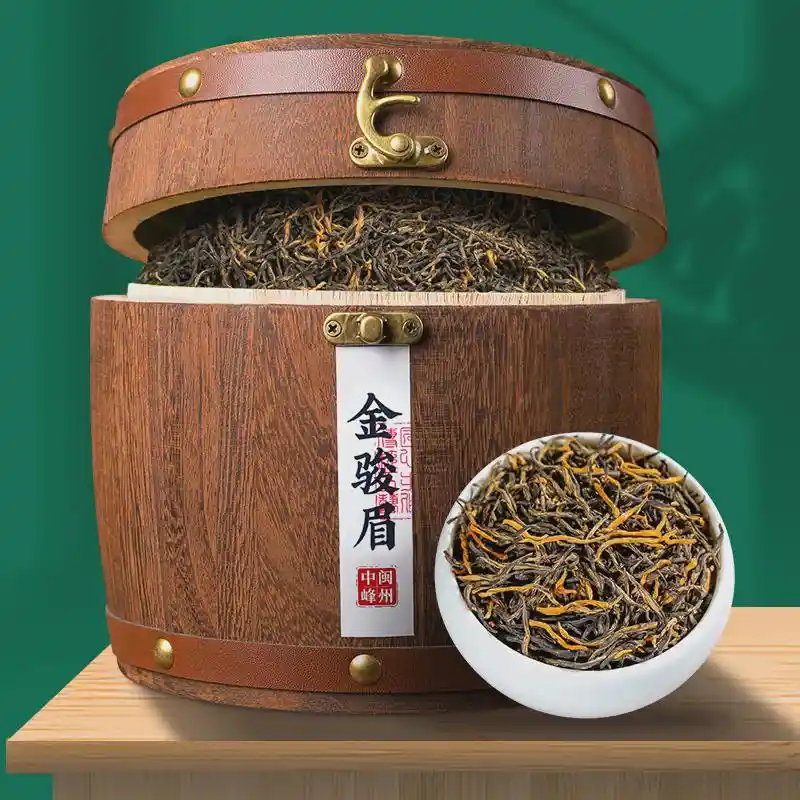
◆ Representative Famous Teas
Traditional production areas are concentrated in Anhui (Qimen), Yunnan (western Yunnan), Fujian (Zhenghe and Tanyang), and Hubei (Yichang). Currently, the tea has also been introduced to countries like India and Sri Lanka.
However, the benchmark Chinese black teas are "Lapsang Souchong," "Qihong," and "Dianhong."
1. Keemun Black Tea:
One of China's traditional Gongfu black teas and one of the world's three most fragrant teas, Keemun Black Tea was created in 1875. "Qimen black tea is unique among all teas, renowned for its pure and elegant fragrance." Internationally, it's known as "Qimen Xiang" (it possesses unique regional aromas of flowers, fruit, and honey, with some also saying it resembles roses and woods). It won a gold medal at the 1915 Panama-Pacific Exposition.
[Chinese Keemun black tea, Indian Darjeeling black tea (with its delicate apple and grape aromas), and Sri Lankan Uva tea (with its lily-of-the-valley and lilac aromas) are all renowned worldwide.]
2. Jin Jun Mei:
A type of Lapsang Souchong black tea, it's primarily produced in Tongmuguan, Wuyi Mountain, Fujian.
Created in 2005, it's named for its golden color, founder Liang Junde, and the eyebrow-like appearance of the tea leaves in the finished product. It's characterized by a golden tea soup, a sweet, and fragrant aroma.
3. Dian Hong:
Successfully trial-produced in 1939 in Fengqing, Yunnan (formerly Shunning Tea Factory, later Fengqing Tea Factory). Due to different drying methods, it is divided into sun-dried and roasted black teas. The former has a mellower flavor, while the latter has a more pronounced aroma.
There is also a type of wild black tea (harvested from wild tea trees in Yunnan). The dried tea has a rosy reddish-gray color, distinct from other Dianhong teas. The aroma of wild black teas is primarily fruity and woody, while traditional Dianhong teas are more floral, with the former being richer.
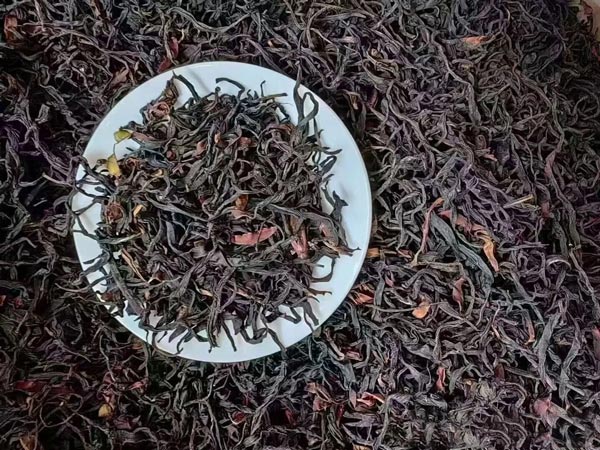
4. Jiuquhongmei:
Produced in Zhejiang, its shape is curved and slender like a hook, and its fame is second only to West Lake Longjing.
5. Yingde Black Tea:
Produced in Yingde City, Guangdong Province. In the 1990s, the "Golden Hair Tea" of Yingde black tea was successfully developed, earning it the nickname "Oriental Golden Beauty." Yingde black teas exhibit a complex aroma of sweetness and orchid notes (this characteristic is more pronounced when processed from fresh leaves of the Yinghong No. 9 variety).
6. Tanyang Gongfu:
Produced primarily in Fu'an and Tuorong, Fujian Provinces. In 1698, the 37th year of Emperor Kangxi's reign, Tanyang Gongfu tea was successfully developed on a trial basis. In 1746, the 11th year of Emperor Qianlong's reign, Tanyang Gongfu tea was further innovated and entered the European market, becoming a staple beverage for afternoon tea at royal palaces in Britain and other countries. It was inscribed on the UNESCO Intangible Cultural Heritage of Humanity list in 2022.
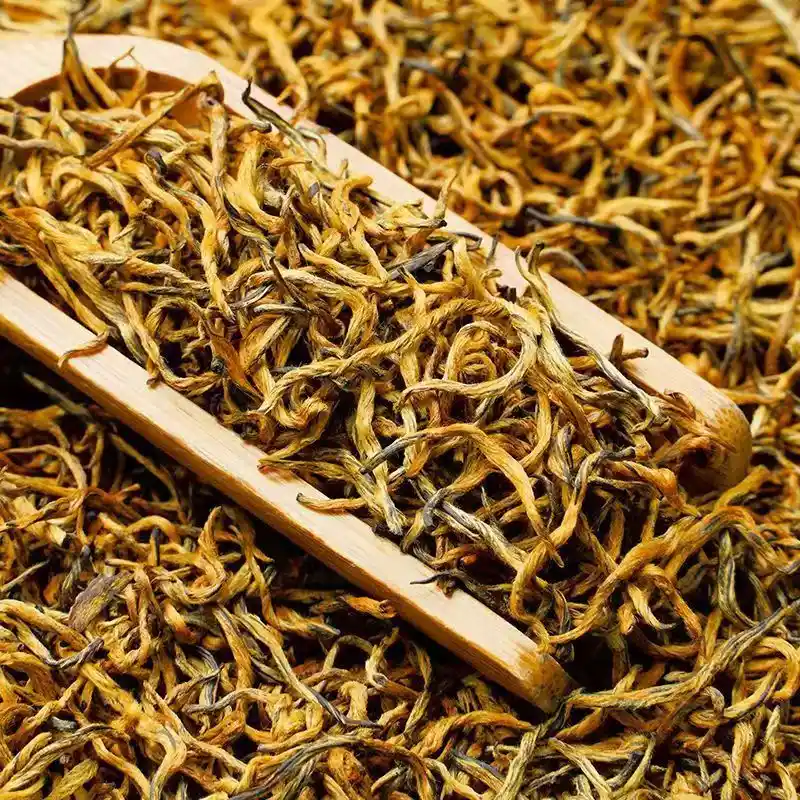
7. Zunyi Red:
Produced primarily in Meitan, Guizhou, this premium Gongfu black tea, developed in the 1840s based on Qianhong, boasts a tender, sweet, fragrant, and refreshing flavor, with a shelf life of two years.
8. Ninghong:
Produced in Jiangxi, it was first developed during the Daoguang reign of the Qing Dynasty. During the Guangxu reign, rare Ninghong teas were presented as tribute.
9. Yihong Gongfu (Yichang Gongfu):
Produced in Yichang and Enshi, Hubei, it is recorded as having been developed during the Daoguang reign of the Qing Dynasty. It has tight, fine leaves, a strong aroma, and a mellow flavor.

%20--%3e%3c!DOCTYPE%20svg%20PUBLIC%20'-//W3C//DTD%20SVG%201.1//EN'%20'http://www.w3.org/Graphics/SVG/1.1/DTD/svg11.dtd'%3e%3csvg%20version='1.1'%20id='图层_1'%20xmlns='http://www.w3.org/2000/svg'%20xmlns:xlink='http://www.w3.org/1999/xlink'%20x='0px'%20y='0px'%20width='256px'%20height='256px'%20viewBox='0%200%20256%20256'%20enable-background='new%200%200%20256%20256'%20xml:space='preserve'%3e%3cpath%20fill='%23FFFFFF'%20d='M194.597,24.009h35.292l-77.094,88.082l90.697,119.881h-71.021l-55.607-72.668L53.229,232.01H17.92%20l82.469-94.227L13.349,24.009h72.813l50.286,66.45l58.148-66.469V24.009z%20M182.217,210.889h19.566L75.538,44.014H54.583%20L182.217,210.889z'/%3e%3c/svg%3e)



